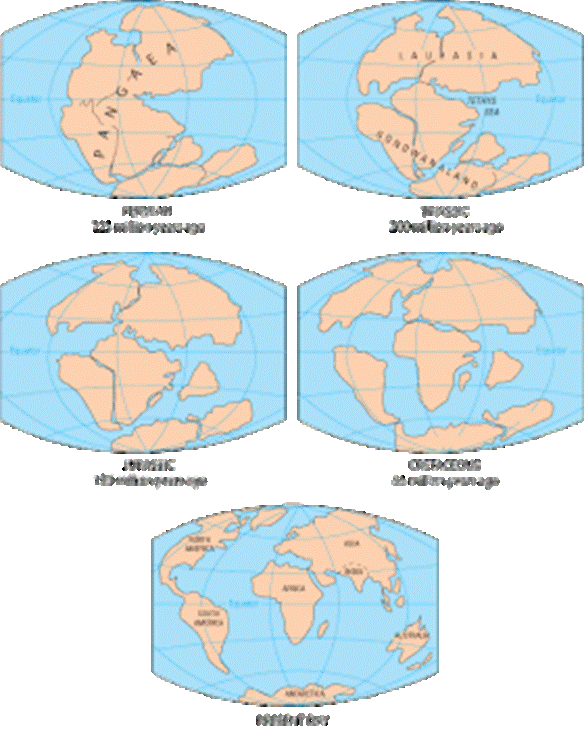
WEST MEETS EAST - ANCIENT MEETS MODERN
WEST TRIFFT OST - ANTIKES TRIFFT MODERNES
观古今之通变 - 述中西之精要
Welcome to IAK Library
We Learn Together
IAK Library: Threads of World Civilizations
The “Threads of World Civilizations” is IAK’s space for gathering the wisdom of sages and tracing the roots of human culture. Here, figures such as Jesus, Buddha, Laozi, and Confucius stand alongside classics and traditions from around the world, woven into a living tapestry of human civilization.
Civilization Series Preface
Some civilizations continue to the present, some belong to the ancient past, and some were transmitted and reborn in new lands.
The Civilization Series of the IAK Library is not merely a historical account, but an exploration of the vitality of civilizations.
Taking the “Four Ancient Civilizations” as its foundation, it proposes a framework of classification:
-
Living Civilization: Chinese civilization has endured to the present and continues to nourish society and the human spirit.
-
Ancient Civilizations: Mesopotamia, Ancient Egypt, and the Indus Valley. Though their early forms ended, their legacies of writing, law, religion, and philosophy continue to inspire humanity.
-
Transmitted Civilization: Buddhism, though it declined in India, was reborn in China and East Asia, becoming an integral part of Chinese civilization.
-
Classical Western Civilizations: Ancient Greece and Rome, whose philosophy, law, and political systems remain the foundations of modern Western culture.
To study these civilizations is not to indulge in nostalgia, but to draw inspiration from their wisdom, to better understand our present, and to envision the future we may share.
(This page focuses on the Four Ancient Civilizations of Eurasia and North Africa and does not elaborate on the civilizations of the Americas or sub-Saharan Africa. For further information, please consult external sources or contact us.)
IAK Library Catalog
The IAK Library unites our physical collections and digital resources into one cultural archive. Here, visitors may explore rare books and manuscripts, read selected classics online, and follow the great threads of world civilizations — from the Four Ancient Civilizations to modern cultural dialogues.
The Deep Origins of Civilization
The threads of civilization do not begin only with writing and cities. They reach deeper, rooted in the Earth and in humanity’s ancient stories. Around 335 million years ago, the Earth was united as a single supercontinent — Pangaea, whose transformations shaped the world we know today. In the Chinese classic Classic of Mountains and Seas (Shan Hai Jing), mountains, rivers, and myths are depicted as part of a cosmic order, resonating intriguingly with modern geological discoveries.


We are one Family.
“青山一道同云雨,明月何曾是两乡。”
Pangaea:335 million years ago
“Classic of Mountains and Seas” 《山海经》
Pangaea or Pangea (/pænˈdʒiː.ə/) was a supercontinent that existed during the late Paleozoic and early Mesozoic eras. It assembled from the earlier continental units of Gondwana, Euramerica and Siberia during the Carboniferous approximately 335 million years ago, and began to break apart about 200 million years ago, at the end of the Triassic and beginning of the Jurassic. In contrast to the present Earth and its distribution of continental mass, Pangaea was centred on the equator and surrounded by the superocean Panthalassa and the Paleo-Tethys and subsequent Tethys Oceans. Pangaea is the most recent supercontinent to have existed and the first to be reconstructed by geologists.
After human origins and prehistoric societies, the true dawn of civilization is often marked by the emergence of writing and the rise of cities. From this moment, history moved beyond oral tradition into records that could be preserved, transmitted, and reflected upon.
The Four Ancient Civilizations

-
Mesopotamia (Babylon):Tigris River, Euphrates River
-
Egypt
-
Indus Valley
-
China
Civilizational Development
From Pre-Classical to Classical, Asia to Europe

Pre-Classical Traditions (Asia to Europe)
Before the rise of the great Classical civilizations, earlier traditions laid the foundations of culture, philosophy, and statehood.
-
India (Vedic Period, c. 2000–500 BCE): hymns of the Vedas, ritual culture, roots of Hindu philosophy.
-
China (Xia, Shang, and Zhou, c. 2000–770 BCE): bronze culture, oracle bones, ancestral rites, and the Mandate of Heaven, foundations of Confucian and Daoist thought.
-
Persia (Elamites and Median traditions, before 550 BCE): early Iranian cultures, leading to the rise of the Achaemenid Empire.
-
Europe – Greece (Minoan and Mycenaean Civilizations, c. 2000–1100 BCE; Archaic Greece, c. 800–500 BCE): palace cultures, Homeric epics, and the rise of philosophy before the Classical age.
-
Europe – Rome (Etruscan Civilization, c. 900–400 BCE): shaping religion, architecture, and politics of early Rome.
Classical Civilizations (c. 500 BCE – 500 CE)
The Classical era saw the flourishing of philosophy, politics, religion, and arts across Asia and Europe. These civilizations reached maturity and left enduring legacies that continue to shape the modern world.
-
Classical India (c. 500 BCE – 500 CE): Buddhism spread across Asia; the Maurya and Gupta empires advanced philosophy, mathematics, and medicine.
-
Classical China (770 BCE – 220 CE): the Hundred Schools of Thought, Qin unification, and the Han empire’s expansion and Silk Road diplomacy.
-
Persian Empires (550 BCE – 650 CE): from the Achaemenids to the Sasanians, shaping Zoroastrianism, art, and serving as bridges of East–West exchange.
-
Classical Greece (500–323 BCE): city-states, democracy in Athens, philosophy from Socrates to Aristotle, and the conquests of Alexander the Great.
-
Classical Rome (500 BCE – 500 CE): from Republic to Empire, creating Roman law, engineering, and cultural institutions that became the foundation of Europe.
Early Exchanges
From the 2nd century BCE, the Silk Roads became more than trade routes—they were bridges of ideas, religions, arts, and sciences.

Philosophical Exchanges
Along the Silk Roads, diverse schools of thought encountered one another. China’s Hundred Schools of Thought — including Confucianism, Daoism, Legalism, and Mohism — engaged in dialogue, directly or indirectly, with Indian philosophy, Persian wisdom traditions, and Greek thought. These intellectual exchanges laid the groundwork for new syntheses of ethics, cosmology, and views of human life.
Religious Transmission
Buddhism spread from India into Central Asia and China, where it flourished and transformed. Alongside it, Zoroastrianism, Manichaeism, and Nestorian Christianity also traveled the Silk Roads, leaving traces in Chinese history and enriching spiritual life across regions.
Artistic Exchanges
Gandhāran art reflects the blending of Indian and Hellenistic traditions. Sasanian silverware also traveled eastward along the Silk Road and appeared in Tang dynasty gold and silver, enriching their variety. At the same time, Chinese silk and porcelain were carried westward, while Mediterranean glass and crafts moved eastward. These artistic treasures bear witness to the broad exchanges and mutual inspirations of civilizations.
Science and Medicine
Astronomy, mathematics, and medicine circulated widely along the Silk Roads. Chinese calendars and star charts interacted with Persian and Indian systems, while herbal knowledge and healing practices traveled across regions, forming a shared heritage of human wisdom.
Why Study Chinese Civilization?

Among the Four Ancient Civilizations—Mesopotamia, Egypt, the Indus Valley, and China—Chinese civilization demonstrates the most remarkable continuity. It has endured to the present, preserving ancient scripts and cultural traditions, while continuously absorbing external wisdom to renew itself. To study Chinese civilization is not only to understand China, but also to explore how humanity has, over millennia, sustained wisdom, maintained continuity, and embraced renewal.
Featured Reading Lists

Beginner’s Path

Philosophy & History
The Philosophy & History section of the IAK Library highlights core classical texts, rare manuscripts, and scholarly resources on the Hundred Schools of Thought, Confucianism, Taoism, Buddhism, and the dialogue between Eastern and Western philosophies. It offers an accessible gateway for exploring humanity’s philosophical traditions and historical exchanges across cultures.

A Dialogue With Ancestors
Health and happiness.
Who am I, and what is my path?
Body and mind, practice and meditation, harmony in family and culture.
A bilingual book published in Switzerland, cataloged in the Swiss National Library’s philosophy section. It explores the wisdom of Confucianism, Buddhism, and Taoism, inspiring scholars and young readers to embrace well-being and cultural heritage.
Continuity of Wisdom
The IAK Library is more than a collection of texts — it is a digital bridge where East and West meet. Bringing together ancient wisdom and modern insights, it helps individuals draw inspiration from the classics, enhance well-being, and live happier lives. Whether you are exploring ancient civilizations or seeking guidance for modern living, the IAK Library is your gateway to profound knowledge.




































